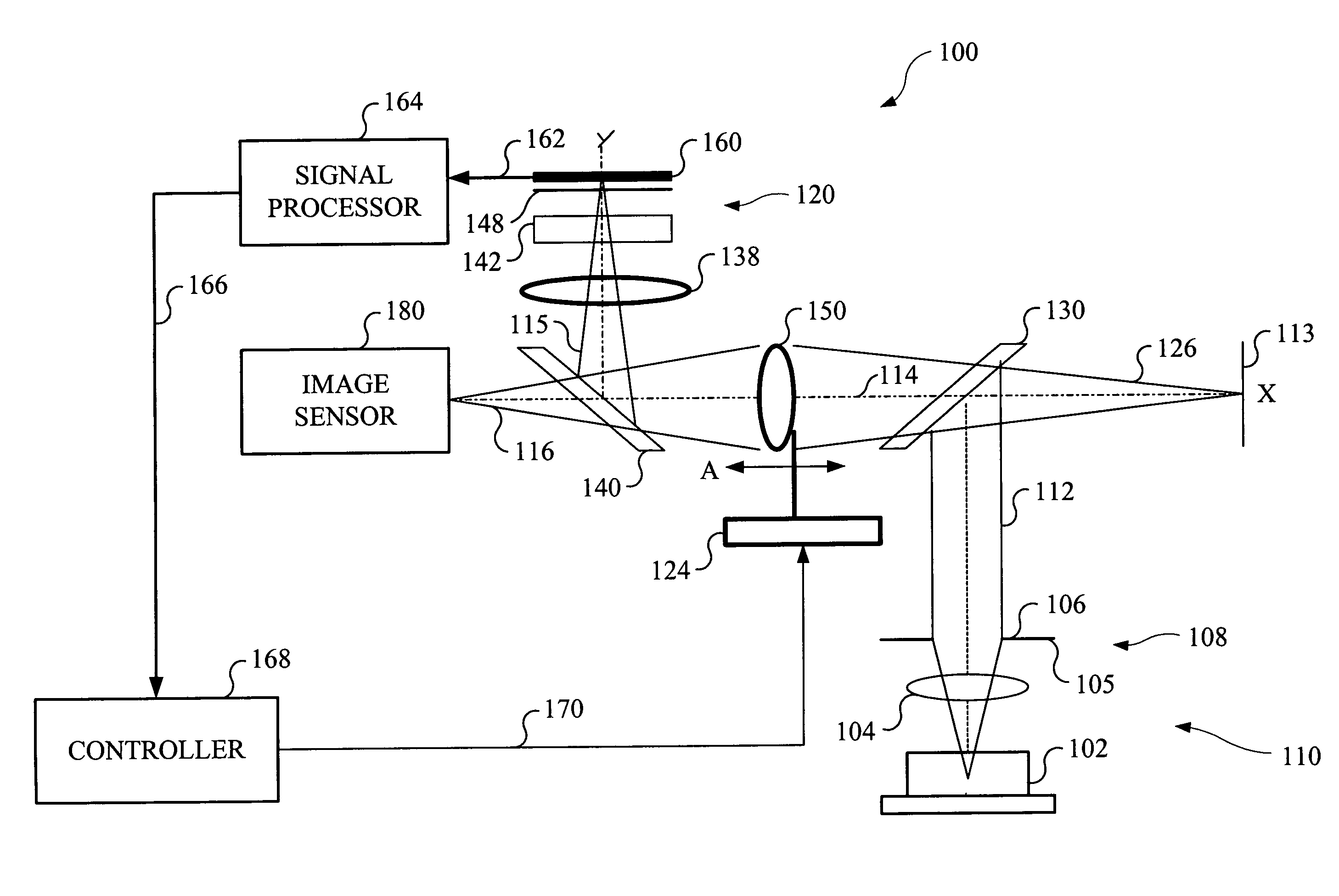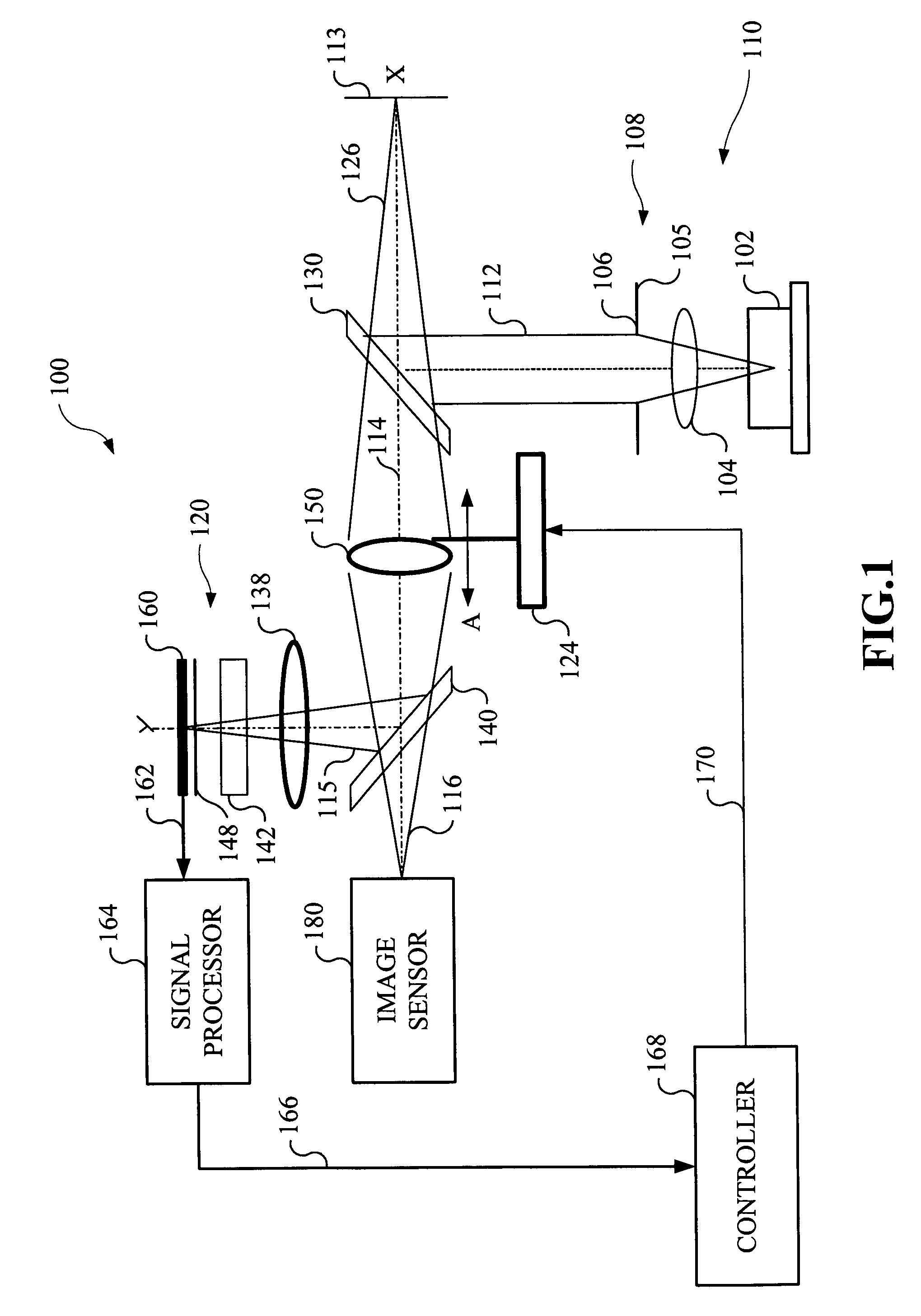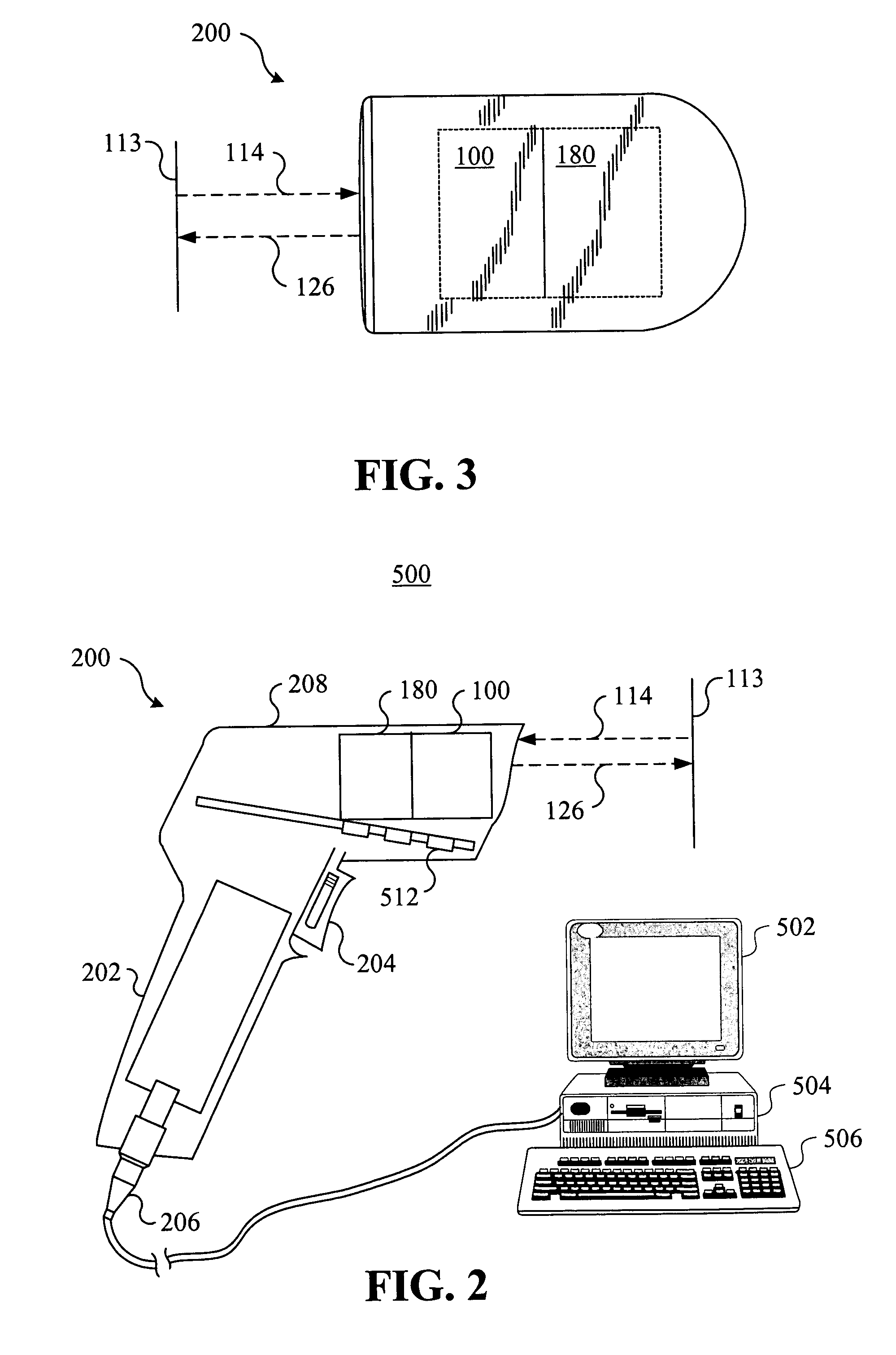Non-parallax optical auto-focusing system and method
an auto-focusing system and non-parallax technology, applied in the field of non-parallax optical auto-focusing system and method, can solve the problems of limiting the response time of the system, prone to errors in the triangulation technique,
- Summary
- Abstract
- Description
- Claims
- Application Information
AI Technical Summary
Benefits of technology
Problems solved by technology
Method used
Image
Examples
Embodiment Construction
[0028]With reference to FIG. 1, there is illustrated a non-parallax optical auto-focusing system designated generally by reference numeral 100 in accordance with the present invention. FIG. 4 illustrates a flow chart of a method of operation using the system shown in FIG. 1. The non-parallax optical auto-focusing system 100 and method are adaptable and configurable for incorporation in various devices, such as cameras, mobile phones, PDAs, terminals, etc., for providing instantaneous or real-time auto-focusing of an image and without being prone to errors due to parallax.
[0029]The system 100 and method are especially suited and described herein for incorporation in optical code readers used for imaging and reading optical codes, such as barcodes. Preferably, the non-parallax optical auto-focusing system 100 is configured and dimensioned to fit within a conventional form factor of an optical code reader 200 (see FIGS. 2 and 3), such as the SE900 and SE1200 form factors developed by S...
PUM
 Login to View More
Login to View More Abstract
Description
Claims
Application Information
 Login to View More
Login to View More - R&D
- Intellectual Property
- Life Sciences
- Materials
- Tech Scout
- Unparalleled Data Quality
- Higher Quality Content
- 60% Fewer Hallucinations
Browse by: Latest US Patents, China's latest patents, Technical Efficacy Thesaurus, Application Domain, Technology Topic, Popular Technical Reports.
© 2025 PatSnap. All rights reserved.Legal|Privacy policy|Modern Slavery Act Transparency Statement|Sitemap|About US| Contact US: help@patsnap.com



